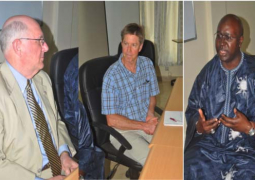(Monday, 08th February 2010 issue)
United Nations International Children Fund Executive Director Ann M. Veneman and the United Nations Development Programme (UNFPA) Executive Director Thoraya Obaid have issued a join statement on the international day against female genital mutilation\cutting. A news dispatch made available to the Point from the UNICEF Gambia office said.
"Progress has been made in recent years in reducing the incidence of female genital mutilation or cutting (FGM/C), largely because communities and families are taking action and calling for change," the joint statement noted.
However, the release went on "an estimated 120 to 140 million women have been subject to this harmful and dangerous practice and 3 million girls continue to be at risk each year.
“The practice persists because it is sustained by social perceptions, including that girls and their families will face shame, social exclusion and diminished marriage prospects if they forego cutting. These perceptions can, and must change."
The news dispatch revealed further that "FGM/C poses immediate and long-term consequences for the health of women and girls, and violates their human rights."
According to the release, success in reducing the incidence in several countries where it was once highly prevalent has occurred as a result of culturally sensitive engagement with local communities, encouraging change from within.
"Where communities have chosen to make public declarations against the practice, for example in
"Support is being provided by UNFPA, UNICEF and other partners for community-led abandonment programmes. The programmes engage parliamentarians, media, traditional communicators, women lawyers, medical associations, religious leaders and scholars to speak out against the practice."
The International Day against Female Genital Mutilation/Cutting provides an opportunity for people everywhere to redouble their efforts and end this harmful practice within a generation.
UNFPA, UNICEF and its partners will continue to work for the achievement of this important goal, and to advance gender equality and improve sexual and reproductive health.



